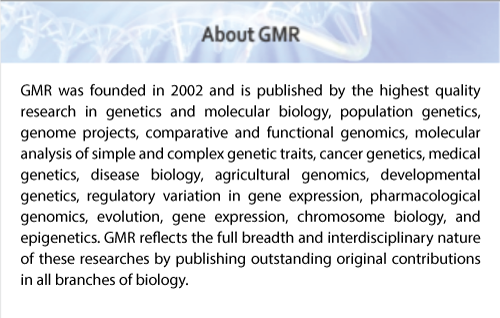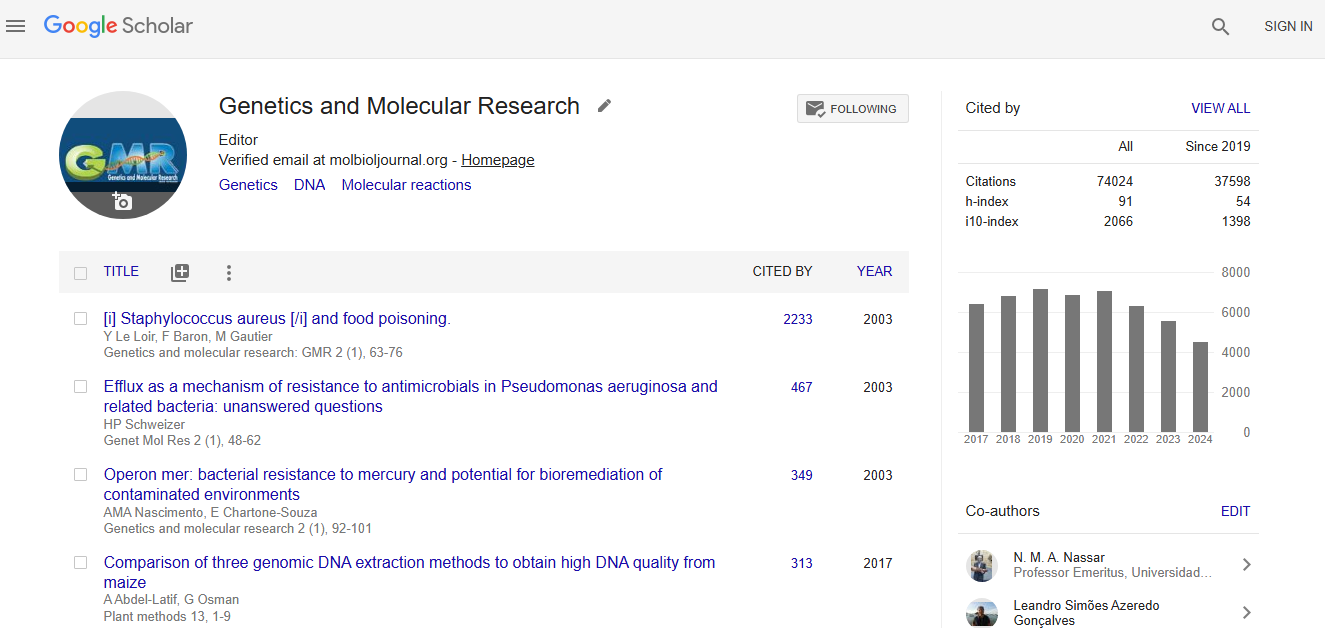Abstract
Genetic characterization of native and invasive Plagioscion squamosissimus (Perciformes, Sciaenidae) populations in Brazilian hydrographic basins
Author(s): R.S. Panarari-Antunes1, A.J. Prioli2, S.M.A.P. Prioli2,3, H.F. JÃ?ºlio Jr2, A.V. Oliveira2,3, C.S. Agostinho4, J.P. Silva Filho5 and L.M. Prioli2The genetic diversity of invasive and native populations of Plagioscion squamosissimus (Heckel, 1840) from the Paraná, Parnaiba and Araguaia-Tocantins river basins was assessed by using Random Amplified Polymorphic DNA (RAPD) markers. Genetic data confirmed the hypothesis of low genetic variability within and among P. squamosissimus populations introduced in the upper Paraná River basin, and indicated that they likely originated from a common ancestor. Moreover, the data demonstrated that, in agreement with available historical records, the P. squamosissimus populations established in the Paraná River basin were derived from a population native to the Parnaíba River basin. The genetic data presented here are of potential future application for the management of the invasive P. squamosissimus populations and for the preservation of the genetic legacy of native fish. The genetic diversity of invasive and native populations of Plagioscion squamosissimus (Heckel, 1840) from the Paraná, Parnaiba and Araguaia-Tocantins river basins was assessed by using Random Amplified Polymorphic DNA (RAPD) markers. Genetic data confirmed the hypothesis of low genetic variability within and among P. squamosissimus populations introduced in the upper Paraná River basin, and indicated that they likely originated from a common ancestor. Moreover, the data demonstrated that, in agreement with available historical records, the P. squamosissimus populations established in the Paraná River basin were derived from a population native to the Parnaíba River basin. The genetic data presented here are of potential future application for the management of the invasive P. squamosissimus populations and for the preservation of the genetic legacy of native fish.
Impact Factor an Index

Google scholar citation report
Citations : 74024
Genetics and Molecular Research received 74024 citations as per google scholar report
